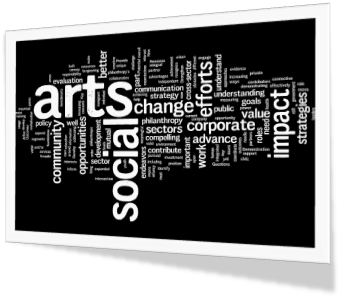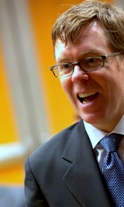
A word cloud generated by the discussion at the National Arts Policy Roundtable.
On September 22-24, over 40 top-level private and public sector leaders along with renowned as well as emerging artists, converged at the Sundance Resort and Preserve for the sixth annual Americans for the Arts National Arts Policy Roundtable, “Innovating for Impact: Arts-Based Solutions for a Stronger America.” The Roundtable is convened in partnership with the Sundance Institute.
The questions put forth were as big as the brilliant blue sky above the reddening autumn leaves dotting the Wasatch Mountain range—“how do the arts bring innovation to social problem-solving?” and “how, as leaders from foundations, business, government and the social sector, can we encourage and support the arts as agents of change?"
Presentations by participants informed the discussion. Artists were at the core both demonstrating and explaining how their work is leading to change on the ground.
Poignant stories told through film, theater, and visual art highlighted the value the arts have in leading to change. Arts projects magnified through the lens of television and social networking revealed how the artistic process and products can be transformed into larger movements and calls to action.
The issues the arts addressed ranged from alleviating poverty to overcoming intolerance, and trying to understand the emotional complexities and personal devastation buried underneath the economic downturn.
Read More


















 Amanda Murphy
Amanda Murphy

 Ali Fernandez
Ali Fernandez





 Michael Hickey
Michael Hickey

 Joanna Chin
Joanna Chin

















